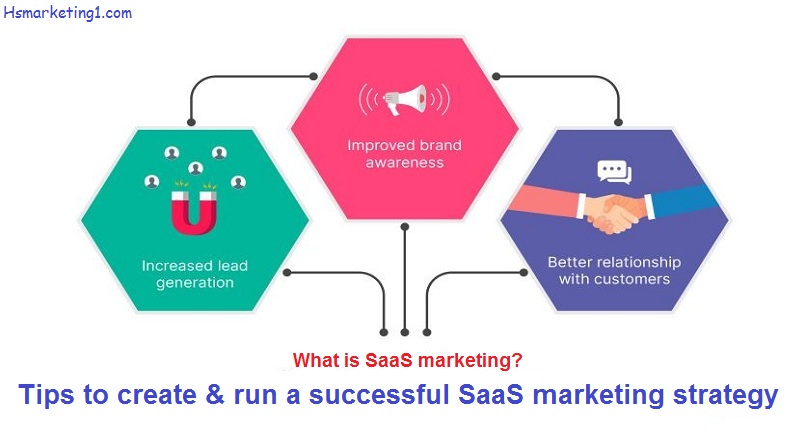
October 2, 2023, 1 Comment
What is SaaS marketing? Tips to create & run a successful SaaS marketing strategy
What is SaaS Marketing?
SaaS marketing plays a pivotal role in creating awareness and driving the sales of software products. It serves as the backbone for fostering growth in product-centric businesses. The essence of SaaS marketing strategy lies in introducing a product to the market, establishing its position, and cultivating brand awareness within the realm of SaaS organizations.
SaaS marketing involves creating a solid plan to attract potential customers. Understand their needs and employ strategies that turn them into paying users. But it does not stop there; you must also retain these customers and encourage them to bring in new clients.
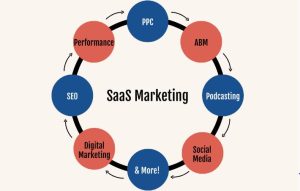
The Thriving SaaS Market
The global SaaS market is on a remarkable trajectory, projected to reach a whopping $195 billion in 2023. 17% surge from the previous year. With such rapid growth, opportunities are waiting. However, to stay ahead of the competition, a solid SaaS marketing plan is a must.
Navigating the SaaS Landscape
Effective marketing is all about distinguishing yourself and in the world of SaaS. To succeed, you need to know your potential customers and where to find them. How to engage with them effectively. However, SaaS marketing is not a one-size-fits-all strategy. It requires tailoring to the specific elements of the SaaS business model.
Unique Aspects of SaaS Marketing
SaaS products are unique in two major ways:
Intangibility: Unlike physical products, you cannot touch or hold a SaaS product. It is entirely digital and requires a focus on digital channels like email and content marketing.
Subscription Model: SaaS operates on an ongoing subscription model. Emphasizing the importance of customer retention as much as acquiring new customers.
The Digital Dominance
Overall, SaaS marketing leans heavily toward digital strategies. Especially for businesses operating entirely online. In this tight competitive environment, understanding the nuances of SaaS marketing and employing suitable techniques can set your business on a path to success.
Adopting a run-of-the-mill B2B marketing strategy would not cut it. The SaaS business model boasts unique elements that demand a custom marketing approach. To successfully promote your product, you must craft a marketing mix designed to fit these distinct characteristics.
We are going to explore 12 very effective and proven tips to improve SaaS marketing strategies. These strategies are the gems of the SaaS marketing world, ready to propel your business to new heights.
What Makes SaaS Marketing Different from Traditional Marketing?
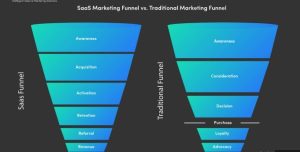
Different Sales Dynamics
SaaS marketing strategy stands apart because it revolves around selling subscription-based services. Unlike traditional products, which involve one-time purchases. SaaS customers pay regularly either monthly or yearly. This creates distinct goals for marketing efforts. Traditional marketing aims to convert prospects into one-time buyers. While SaaS marketing seeks to turn interested parties into long-term subscribers. The focus is on sustaining revenue over time.
Promoting Intangible Products
SaaS marketing faces the challenge of promoting intangible products. Most SaaS offerings are purely digital and can be complex. The marketing strategy must strike a balance between simplicity and informativeness. Ensuring potential customers understand how the product solves their problems.
Target B2B and B2C Customers
SaaS products typically target both B2B and B2C customers. This means persuading decision-makers in organizations that your solution is the right fit. For instance if you offer a CRM solution, approaching sales department directors at B2C companies makes sense. Customer retention becomes crucial in this scenario as retaining long-term customers is fundamental to the SaaS model.
Extended Customer Journey
Choosing a SaaS solution is usually a lengthy decision-making process. Integration often requires a reevaluation of business processes, prompting potential customers to conduct thorough research. They may request detailed information and demos to assess compatibility with their existing systems. Consequently, SaaS sales cycles tend to be longer, making some traditional marketing methods less effective.
Intense Competition
The SaaS market is highly competitive, with thousands of companies vying for attention. Focus on delivering a high-quality product and effective branding to stand out. Develop a digital marketing strategy that incorporates SEO, content marketing and SaaS-specific techniques.
In this competitive atmosphere, pricing plays a pivotal role. Set your pricing model for your target market. Small businesses may prioritize affordability, while large corporations may seek different value propositions. Offering tiered pricing options with clear and detailed explanations can enhance conversions.
These insights underscore the distinctive aspects of SaaS marketing. Which requires effective strategies to thrive in a dynamic and competitive environment.
What is a SaaS marketing strategy?
SaaS marketing strategy is all about making people aware of and interested in your software, ultimately driving sales. In the world of business it is a vital ingredient for growth. It involves introducing your product to the market, giving it a position and creating excitement about your SaaS company.
Why is it so important? Well, think of it as the engine behind the scenes that makes sure your software does not go unnoticed. What sets your product apart, tells people why they need it and gets them excited about it. SaaS marketing is like the spotlight that shines on your software, making sure it gets the attention it deserves.
Why is SaaS marketing important?
Through niche targeting, digital marketing for SaaS companies helps them attract the proper customers and enables them to enthrall their customers with their offerings. They may boost their brand recognition, get more leads to make more money and remain relevant thanks to it.
What is the strategy of SaaS products?
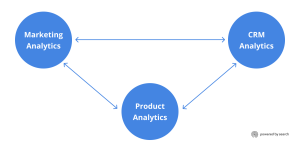
An explanation of the issue your tool resolves and how it differs from related or rival goods are both included in a SaaS product strategy. It also directs the efforts of your sales and marketing teams by highlighting the valuable propositions and target users of your technologies. In essence it directs product choices.
Why can’t B2B companies do without SaaS marketing?
B2B SaaS marketing is like the secret sauce for success in the digital realm. It might seem like a big competitive jungle out there, and it is. But that is where SaaS marketing shines. Whether you are up against industry giants or catering to a specialized niche, SaaS marketing has your back.
Here is the deal: the SaaS world is all about evolution. To keep your business relevant, you have to constantly level up and add new features for improvement. That’s where savvy marketing comes in. It aligns with your software growth, making sure your message reaches the right ears.
With the right SaaS marketing strategy, you can conquer any challenge and make the most of your budget. It is your ticket to achieving those business goals, no matter what services you offer.
Tips To create an effective SaaS marketing strategy
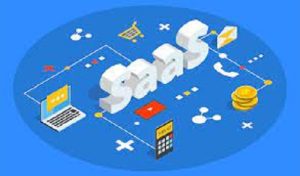
When it comes to marketing your SaaS product effectively, it boils down to two key phases. You need to draw a crowd to your website, generating organic traffic. Then showcase your service in the best possible way.
Let’s break it down into two clear sections:
- Boosting Your Website Traffic
- How to Sell Your Services Online
Here are the 12 most effective tips to prepare a SaaS marketing strategy.
Boosting Your Website Traffic
- Strategies to drive more visitors to your SaaS site
- How to convert that traffic into valuable sales
1 SaaS Lead Generation with Content Marketing
Creating high-quality content is a powerful way to attract leads to your SaaS website and keep them coming back for more. To make this strategy work, your content should cater to the interests of your target audience.
For instance, if your SaaS tool specializes in Facebook marketing, your content topics could include:
- Top-notch Facebook marketing strategies
- Facebook marketing tailored for SaaS companies
- Jumpstarting your startup with Facebook marketing
- Leveraging influencers in your Facebook marketing strategy
The possibilities are endless, and tools like Keywords Everywhere can help you discover relevant topics based on search volume.
But remember, your content should align with user intent and relevant keywords. If users are searching with purchase intent, direct them to a sales page. If they’re seeking information, offer informative blog posts or guides. Understanding where your potential customers are in the sales funnel is crucial. Whether it’s a landing page, case studies, or informative blog posts, having the right content available is key.
However, great content alone won’t cut it. You must also generate backlinks to help your content rank. Analyze the backlinks of top-ranking content to gauge how many you need. As your content gains recognition, your SaaS business will establish itself as an industry authority.
Content creation can be time-consuming, especially for busy sales teams. Consider partnering with SaaS SEO companies or seeking collaborations to save time in the long run.
2 Improve your Website Traffic With SEO
To supercharge your site’s traffic, nothing beats a solid SEO strategy. Search engine optimization is like the magic wand of the digital world, closely intertwined with content marketing.
In essence, SEO aims to elevate your site’s visibility on search engine results pages. The higher your site ranks, the more visitors it attracts. SEO involves a plethora of tactics, some of which are particularly effective for SaaS sites. While the details can be intricate, what’s crucial is that investing in top-tier SaaS SEO can work wonders for your site’s traffic.
3 Invest in advertising with Paid Search (PPC)
Paid search, often referred to as PPC advertising, is a valuable addition to your SaaS marketing strategy.
However, it’s important to note that PPC is not a substitute for content marketing and SEO. Instead, it complements these strategies and can be particularly effective for generating quick traffic results. For starters, allocate a portion of your marketing budget to cover branded search terms, which include your company name. Competing software companies may target these terms, so you want to secure those clicks.
When investing in PPC ads, the key is to maximize the return on your investment and keep customer acquisition costs in check. Your marketing team should craft compelling ads that highlight your service’s benefits.
To boost ad conversion rates, continuous testing is vital. Experiment with various ad copy variations, research relevant keywords and closely monitor metrics. This iterative approach helps you fine-tune your PPC strategy until you find the winning formula.
4 Use the Power of Referral Marketing
Referral marketing is like the modern-day version of word-of-mouth advertising but in a digital format. It revolves around encouraging your current customers to recommend your service to others, either privately or through platforms like LinkedIn.
This strategy is highly effective for SaaS marketing strategy because it increases the likelihood of attracting qualified leads. These leads already trust your business to some extent due to the recommendation, making it especially valuable for B2B SaaS brands, where decisions are typically more considered.
However, even your most satisfied customers might need a little nudge to refer you to their network. That’s where a well-structured referral program with enticing incentives or rewards comes into play. For example, you can offer users access to extra features or a higher software tier in exchange for referrals. Dropbox, for instance, rewards users with additional storage space when they invite friends to join.
5 Boost Your SaaS Business with Industry Exposure
Reviews and testimonials hold significant influence over people’s decisions. According to a study, a staggering 91% of individuals aged 18-34 trust online reviews as much as personal recommendations.
That’s why it’s crucial to gain industry exposure for your SaaS business on popular review sites like G2 and Capterra, among others. These platforms offer a space for users to leave reviews and ratings about software products.
Securing positive reviews on these sites can not only drive more traffic to your website but also build trust with potential customers. While not all review sites may feature your product, it’s worth the effort to try and get listed on as many as possible. Having a positive presence across these platforms serves as social proof, demonstrating the reliability and effectiveness of your business to prospective clients.
How to Sell Your Services Online
- Showcase your services for selling it online
- From pinpointing your target customers to securing their long-term loyalty
With these insights, your SaaS marketing strategy is set for success.
6 Simplifying Choices for SaaS Success
While it might seem tempting to offer a wide array of choices to your SaaS customers, simplicity often wins the day. The idea is to limit the number of options you present to customers, making their decision-making process easier.
Take Mailchimp, for example. This email marketing software offers numerous features, yet it only provides four distinct pricing plans, each with a clear set of advantages.
By streamlining choices this way, prospective customers can easily compare the options and select the one that best suits their needs. This approach prevents them from feeling overwhelmed and encourages them to stay with your service instead of seeking alternatives.
7 Transparent Pricing is Key
In the world of SaaS, being upfront about your pricing is crucial. Some SaaS companies hide their pricing, hoping to pique visitors’ interest before revealing the cost. However, this approach can backfire.
Imagine visiting a website to make a purchase, only to find no pricing information. It is frustrating. Most people would likely leave and look for alternatives.
For SaaS businesses, this can result in high customer turnover. Hidden or unclear pricing makes potential customers skeptical, regardless of how good your marketing efforts are.
Ensure your pricing strategy clearly illustrates the value each plan or package offers. This openness fosters trust and makes it easier for potential customers to make informed decisions.
8 Use Free Trials and Freemium Models
Free trials and freemium models are like bread and butter for SaaS marketing strategy. They are incredibly effective at showcasing your software’s capabilities and converting potential users into paying customers.
Free trials, a common offering in the SaaS world, allow users to explore your software’s functionality and understand how it can address their specific needs. Prominently featuring free trials on your website, as seen with companies like Xero, can entice visitors to give your product a try.
Alternatively, you can opt for a freemium model. This approach provides users with a free version of your software indefinitely, but access to advanced features requires a subscription. Freemium models offer a taste of the benefits, encouraging users to rely on your product and eventually upgrade for additional functionalities.
9 Streamline the Sign-Up Process
When it comes to user sign-ups, simplicity is key. After all your hard work in marketing and convincing visitors to explore your service, the last thing you want is a lengthy and complicated sign-up form driving them away.
Ensure your onboarding process is seamless and efficient. Only request essential information necessary for user registration, avoiding unnecessary fields. The goal is to minimize any excuses that might deter potential customers from completing the sign-up process.
10 Strategically Implement Deals and Discounts
Deals and discounts can play a pivotal role in your SaaS marketing strategy. They not only demonstrate to potential customers that they can get more value from your service but are also effective for upselling and cross-selling.
However, it is essential to use these offers judiciously. If discounts are available all the time, they lose their appeal and become the expected norm. Instead, reserve them for specific occasions or when particular conditions are met, such as first-time sign-ups to maintain their impact as special offers.
11 Streamline User Experience with Clear CTAs
Ensuring a seamless journey for your site visitors is essential to converting them into customers effortlessly. To achieve this, integrating clear calls to action (CTAs) into your content marketing strategy is a smart move. Consider the Mailchimp website as an example:
This webpage presents visitors with straightforward options: “Sign Up,” “Login,” or “Chat with us.” The explicit wording and prominent placement of these CTAs guide users through the site, leading them toward the sign-up process without any confusion. This approach helps users progress naturally and efficiently through the website.
12 User Experiences for SaaS Success
While we have delved into marketing and selling your software. It is vital not to overlook the other “S” in SaaS: service. Exceptional service is a cornerstone of customer retention. Even if your software resembles that of competitors, you can stand out by enhancing the customer experience.
- Highlight Benefits: Clearly convey how your software improves users’ lives or businesses in your marketing materials.
- Outstanding Customer Service: Ensure your customer service is top-notch. It’s not just about having a great product; it’s about delivering a fantastic user experience at every interaction with your brand.
- Informative Resources: Host webinars, share templates, and provide informative guides or white papers to assist users beyond the product itself.
Remember, the user experience extends beyond your software; it encompasses every touchpoint with your brand.
Let’s Go Together for Your SaaS Marketing Success
You have a wealth of knowledge now, 12 actionable Tips and more insights than you can adopt. It is time to weave these tips into your SaaS marketing strategy. Whether you implement all of them to resonate most with your brand or not, this strategy is uniquely yours. It should mirror your business and brand identity.
Feeling a bit lost on where to begin or how to grab your ideal customer’s attention? Do not worry; HS Marketing is here to guide you through the process. Let us help you kickstart your journey and transform a challenging task into a smoother experience.



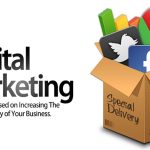


Target Audience: Steps to Find and Connect with Your Ideal Customers - HS Marketing
October 7, 2023[…] your target audience holds paramount importance in shaping your marketing strategies and […]